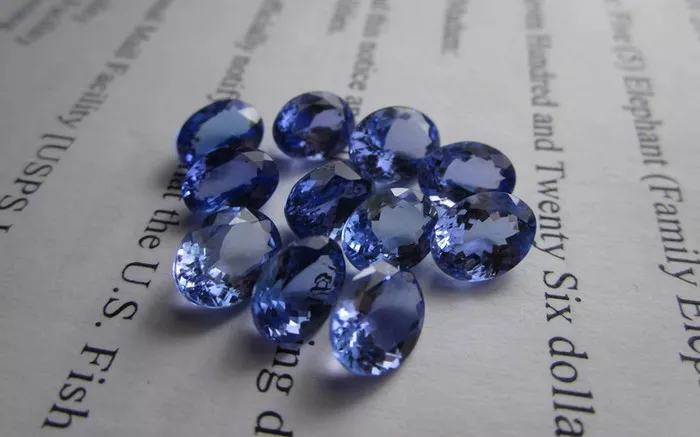Tanzanite and diamond are both popular gemstones, but they differ significantly in terms of rarity. Tanzanite, a relatively new addition to the world of gemstones, is found in only one location globally, making it exceptionally rare. In contrast, diamonds, while also prized for their scarcity and beauty, are found in various locations worldwide. This article explores how rare is tanzanite compared to diamond, examining their geological origins, mining processes, market availability, and factors influencing their rarity.
Geological Origins
Tanzanite is a variety of the mineral zoisite and is renowned for its striking blue-violet color. It was first discovered in the Merelani Hills of northern Tanzania in 1967, making it one of the newest gemstones to be introduced to the market. Tanzanite’s unique color is the result of the presence of vanadium and chromium in the gemstone, which interact with the Earth’s heat and radiation to produce its distinctive hue.
Diamonds, on the other hand, have been known to mankind for centuries and are formed deep within the Earth’s mantle under extreme pressure and temperature conditions. They are composed of carbon atoms arranged in a crystal lattice structure, giving them their renowned hardness and brilliance. Diamonds are typically found in kimberlite pipes, which are ancient volcanic structures that bring diamonds to the Earth’s surface during volcanic eruptions.
Mining Processes
The mining of tanzanite is a labor-intensive process that involves digging deep shafts and tunnels into the Earth’s crust to reach the gemstone-bearing veins. Once the veins are reached, miners extract the tanzanite-bearing rocks and transport them to the surface for processing. The mining of tanzanite is regulated by the Tanzanian government to ensure sustainable practices and minimize environmental impact.
Diamond mining, on the other hand, can be done through both open-pit and underground mining methods, depending on the location and geology of the diamond deposit. Open-pit mining is more common and involves the excavation of large open pits to access the diamond-bearing rock layers. Underground mining, on the other hand, involves the construction of tunnels and shafts to reach the diamond deposits.
Market Availability
Due to its limited geographical occurrence, tanzanite is considered one of the rarest gemstones in the world. The majority of tanzanite is mined from a single source in Tanzania, making it susceptible to supply fluctuations and market volatility. As a result, tanzanite prices can vary significantly depending on factors such as supply, demand, and gemstone quality.
Diamonds, on the other hand, are found in various locations worldwide, including Africa, Australia, Russia, and Canada. This widespread occurrence makes diamonds more readily available in the market compared to tanzanite. However, not all diamonds are of gem-quality, and only a small percentage of mined diamonds are suitable for use in jewelry.
Factors Influencing Rarity
Several factors influence the rarity of both tanzanite and diamonds.
1. Geological Factors: Tanzanite’s rarity is primarily due to its limited geological occurrence in a single location. Diamonds, on the other hand, are found in multiple locations worldwide, but only a small percentage of diamond deposits are economically viable for mining.
2. Market Dynamics: Tanzanite’s rarity is further compounded by market dynamics, such as fluctuating demand and supply chain issues. Diamonds, while more abundant, are also influenced by market forces that can impact their availability and pricing.
3. Quality and Size: The rarity of both tanzanite and diamonds is also influenced by their quality and size. Larger, high-quality gemstones are rarer and command higher prices in the market.
Conclusion
In conclusion, tanzanite is significantly rarer than diamonds due to its limited geographical occurrence, labor-intensive mining process, and market dynamics. While diamonds are also prized for their rarity and beauty, tanzanite stands out as a gemstone with a unique allure and scarcity that make it highly sought after by collectors and enthusiasts alike.


